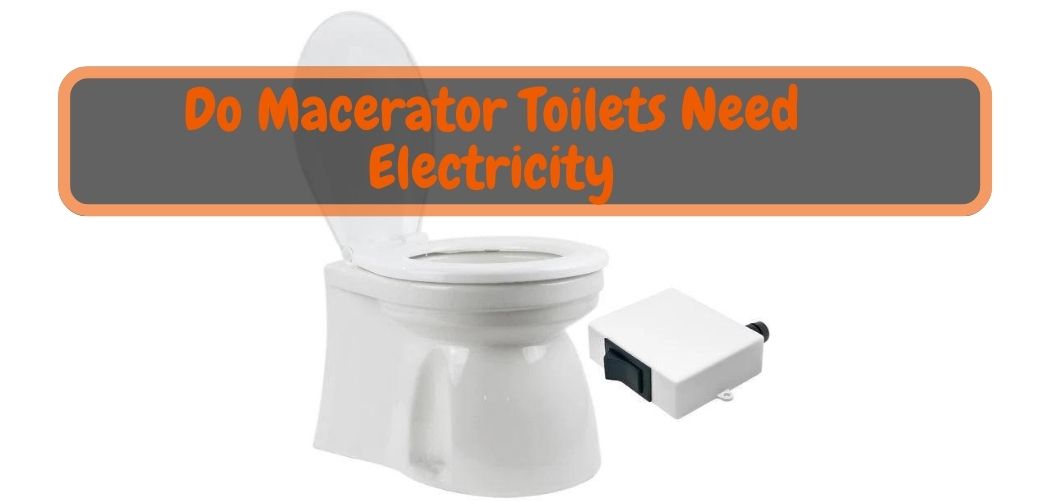Do Macerator Toilets Need Electricity: Electrifying Facts!

Yes, macerator toilets typically require electricity to operate. A macerator toilet is a type of toilet that uses a macerator pump (a high-powered grinder) to break down waste and toilet paper into a fine slurry before pumping it into the sewage or plumbing system. This grinding and pumping action is powered by an electric motor.
The electric motor provides the necessary power to operate the macerator pump, which grinds the waste and moves it through the plumbing system.
Therefore, without electricity, the macerator toilet would not function properly, and waste disposal would be ineffective.
It’s essential to have a reliable power source for macerator toilets to ensure their proper operation and functionality.
How Much Energy Does a Macerator use?
The energy usage of a macerator toilet can vary based on the specific model, brand, and features. However, most macerator toilets typically have an electric motor with a power rating ranging from 400 to 1200 watts (0.4 to 1.2 kilowatts).
To estimate the energy usage of a macerator toilet, you can use the following formula:
Energy usage (in kilowatt-hours, kWh) = Power rating of the macerator (in kilowatts, kW) × Operating time (in hours)
For example, if a macerator toilet has a power rating of 0.8 kW (800 watts) and operates for 1 hour:
Energy usage = 0.8 kW × 1 hour = 0.8 kWh
It's important to note that the actual energy usage will depend on how often and for how long the macerator toilet is in operation. Additionally, newer models may be designed to be more energy-efficient. It's a good idea to check the specifications provided by the manufacturer for the exact power consumption of a specific macerator toilet model.
Also Read: Unlocking the Truth: Macerator Toilets – Boon or Bane?
The Macerator Toilet Building Regulations!
Here are a table of the key building regulations and considerations for macerator toilets:
| Aspect | Macerator Toilet Building Regulations |
|---|---|
| Plumbing Codes and Regulations | Must comply with local and national plumbing codes and regulations governing sewage and waste disposal systems. |
| Electrical Codes and Requirements | Electrical connections for the macerator must adhere to local electrical codes to ensure safety and proper functioning. |
| Ventilation Requirements | Adequate ventilation must be provided to prevent odors and maintain a healthy indoor environment. |
| Proper Drainage | Macerator toilets should be connected to appropriate drainage systems, meeting the requirements for waste disposal. |
| Backflow Prevention | Installation should include backflow prevention devices to ensure sewage doesn’t contaminate the potable water supply. |
| Accessibility and ADA Compliance | Toilets should be installed in a manner that adheres to accessibility guidelines, ensuring they are usable by individuals with disabilities (ADA compliance). |
| Structural Integrity | Proper structural support and reinforcement must be in place to accommodate the weight and operation of the macerator toilet. |
| Permits and Approvals | Obtain the necessary permits and approvals from local building authorities before installation to ensure compliance with regulations. |
| Manufacturer’s Guidelines | Follow manufacturer-specific guidelines and recommendations for installation and use to maintain compliance and warranty coverage. |
These are essential considerations when installing a macerator toilet to ensure compliance with building regulations and standards, encompassing plumbing and electrical codes, ventilation, drainage, accessibility, structural integrity, and necessary permits. Always consult local authorities and adhere to manufacturer guidelines for a compliant installation.
Also Read:The Ugly Truth: Disadvantages of Macerator Toilets
Important Info Related to: Do Macerator Toilets Need Electricity?
Q: What are common macerator toilet problems?
A: Macerator toilets may experience issues such as clogs, jamming, motor malfunctions, and the need for regular maintenance to ensure proper functioning.
Q: How does a macerator toilet work?
A: A macerator toilet grinds waste into a slurry using a macerating pump. The waste is then pumped through small-diameter pipes to the main sewer or septic system.
Q: Where does the waste from a macerator toilet go?
A: The waste from a macerator toilet is typically pumped into the existing plumbing system, ultimately reaching the main sewer or septic tank.
Q: What are the pros and cons of a macerating toilet?
A:
Pros: Allows installation in locations distant from the main sewer line, versatile placement options, avoids costly and invasive plumbing alterations.
Cons: Potential for mechanical failure, regular maintenance needed, higher upfront cost compared to traditional toilets.
Q: Are macerator toilets noisy?
A: Macerator toilets can generate some noise during the macerating and pumping process, but newer models often come with noise-reducing features to minimize disturbance.
Q: Are macerator toilets a good choice for a bathroom?
A: Macerator toilets are a good choice for bathrooms where traditional plumbing is challenging or costly to install. They offer flexibility in placement and can be an effective solution when installed and maintained correctly.
Q: What is the electrical connection for a macerator?
A: Macerator toilets require an electrical connection to power the macerating pump. The pump uses the electrical power to grind waste and pump it into the plumbing system.
